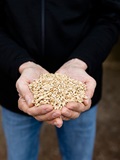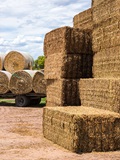Gippsland
20 May 2020
| Date | Gipps 23 | Gipps 22 | Gipps 5YA |
|---|---|---|---|
| 06-Jan-23 | 236 | 100 | 209 |
| 13-Jan-23 | 250 | 100 | 193 |
| 20-Jan-23 | 280 | 100 | 195 |
| 27-Jan-23 | 290 | 100 | 197 |
| 03-Feb-23 | 290 | 100 | 199 |
| 10-Feb-23 | 300 | 100 | 199 |
| 17-Feb-23 | 300 | 100 | 190 |
| 24-Feb-23 | 300 | 100 | 180 |
| 03-Mar-23 | 300 | 100 | 182 |
| 10-Mar-23 | 300 | 100 | 187 |
| 17-Mar-23 | 300 | 100 | 190 |
| 24-Mar-23 | 300 | 100 | 190 |
| 31-Mar-23 | 295 | 100 | 190 |
| 07-Apr-23 | 295 | 100 | 190 |
| 14-Apr-23 | 295 | 104 | 191 |
| 21-Apr-23 | 295 | 108 | 192 |
| 28-Apr-23 | 295 | 113 | 193 |
| 05-May-23 | 295 | 113 | 193 |
| 12-May-23 | 293 | 113 | 209 |
| 19-May-23 | 290 | 113 | 209 |
| 26-May-23 | 290 | 113 | 209 |
| 02-Jun-23 | 290 | 118 | 218 |
| 09-Jun-23 | 290 | 118 | 221 |
| 16-Jun-23 | 290 | 118 | 217 |
| 23-Jun-23 | 290 | 118 | 214 |
| 30-Jun-23 | 285 | 118 | 214 |
| 07-Jul-23 | 285 | 118 | 227 |
| 14-Jul-23 | 283 | 119 | 227 |
| 21-Jul-23 | 280 | 120 | 227 |
| 28-Jul-23 | 280 | 135 | 230 |
| 04-Aug-23 | 265 | 135 | 230 |
| 11-Aug-23 | 265 | 135 | 249 |
| 18-Aug-23 | 265 | 135 | 249 |
| 25-Aug-23 | 265 | 135 | 249 |
| 01-Sep-23 | 265 | 135 | 249 |
| 08-Sep-23 | 135 | 249 | |
| 15-Sep-23 | 135 | 249 | |
| 22-Sep-23 | 135 | 259 | |
| 29-Sep-23 | 135 | 269 | |
| 06-Oct-23 | 135 | 269 | |
| 13-Oct-23 | 135 | 269 | |
| 20-Oct-23 | 140 | 270 | |
| 27-Oct-23 | 140 | 270 | |
| 03-Nov-23 | 140 | 276 | |
| 10-Nov-23 | 140 | 276 | |
| 17-Nov-23 | 160 | 280 | |
| 24-Nov-23 | 160 | 280 | |
| 01-Dec-23 | 163 | 245 | |
| 08-Dec-23 | 165 | 238 | |
| 15-Dec-23 | 183 | 199 | |
| 22-Dec-23 | 195 | 202 | |
| 29-Dec-23 | 223 | 212 |
Notes:
Change in price is the change since the last report. Hay quoted is sourced and delivered locally, GST exclusive unless stated otherwise. It should be noted that local prices quoted may not be the cheapest available, sourcing it from another region may be more affordable, and buyers are encouraged to evaluate all options. Prices are indicative to a mid-range shedded product, and based on the best indication of market value at the time of reporting. It should be noted there is a wide variation in quality of hay, prices for a mid-range product will not reflect the weighted average of trade. Prices will naturally vary based on the product quantity and quality, buyer/seller relationship and the size of the trade.The hay report has been commissioned by Dairy Australia to provide an independent and timely assessment of hay markets in each dairy region. This report is created using data provided by the Australian Fodder Industry Association (AFIA). It should be remembered that actual prices may vary for quality or other reasons. Whilst all reasonable steps have been taken to ensure the accuracy of the information contained in this report, Dairy Australia disclaims all liability to the fullest extent permitted by Australian law for any inadvertent errors and for any losses or damages stemming from reliance upon its content. Dairy Australia recommends all persons seek independent advice and, where appropriate, advice from a qualified advisor before making any decisions about changes to business strategy.
Commentary
- Widespread but very low rainfall totals across the region this week, with almost all areas receiving less that 5mm of rainfall. The east saw slightly higher falls of up to 10mm of rain. Frost continues to be reported throughout the region.
- Pastures in the western and central parts of the region remain green and are still providing some green feed options, though the ground is beginning to dry out. While there has been some higher rainfall in the eastern parts recently, the ground is still quite dry and pasture growth is sluggish.
- Sporadic silage cutting is continuing in the region, though the widespread rainfall is causing delays in what should be second cuts for some in the central parts, while the west is seeing mostly first cuts.
- Cereal crops in the region are showing good growth and potential, though there have been some frosts which are a cause for concern for growers. Comments suggest it will be a few weeks before any frost damage can be detected and then growers will assess the viability of taking the crops to grain harvest.
- Enquiries continue to be at the higher end of the market locally, and for all quality of fodder supplies outside the region. Some stored hay is moving up into NSW, especially the South Coast to supplement herds in the dry conditions. There is some movement of older silage stocks being seen from the west to the east to supplement stalled pasture growth.
- Some change to pricing this week.
- Cereal hay: +5 ($280 to $320/t). Prices increase this week.
- Lucerne hay: +/-0 ($390 to $440/t). Prices remain steady this week.
- Straw: +/-0 ($100 to $135/t). Prices remain steady this week.
- Pasture hay: +/-0 ($240 to $290/t). Prices remain steady this week.
- Please note: Unless stated otherwise, prices are per tonne, sourced and delivered locally. The price range indicated is for feeds of varying quality with the price range generally indicative of quality of feed. We recommend feed testing and viewing of fodder before purchase to be sure of the quality of feed.

